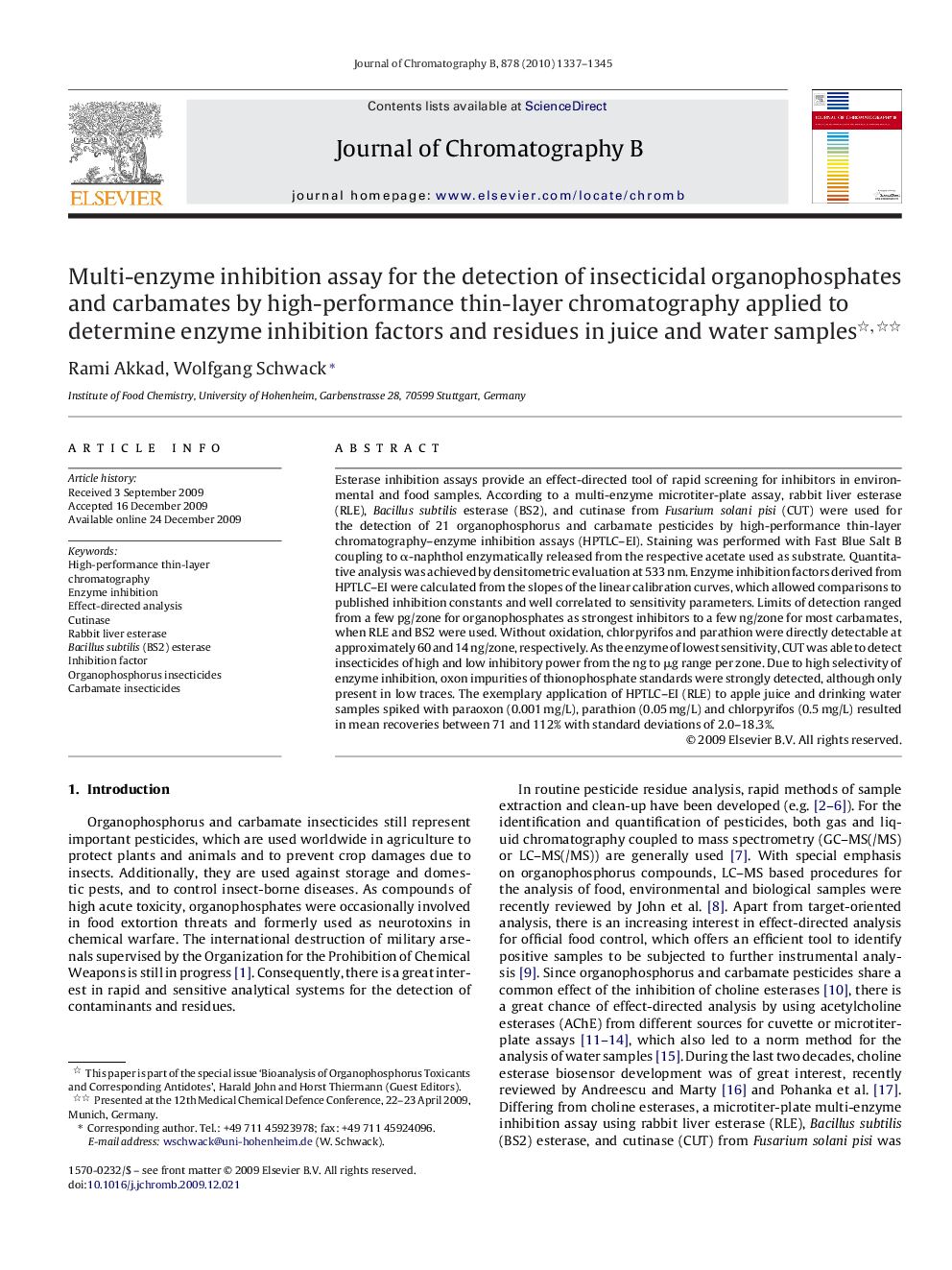| کد مقاله | کد نشریه | سال انتشار | مقاله انگلیسی | نسخه تمام متن |
|---|---|---|---|---|
| 1215059 | 1494151 | 2010 | 9 صفحه PDF | دانلود رایگان |

Esterase inhibition assays provide an effect-directed tool of rapid screening for inhibitors in environmental and food samples. According to a multi-enzyme microtiter-plate assay, rabbit liver esterase (RLE), Bacillus subtilis esterase (BS2), and cutinase from Fusarium solani pisi (CUT) were used for the detection of 21 organophosphorus and carbamate pesticides by high-performance thin-layer chromatography–enzyme inhibition assays (HPTLC–EI). Staining was performed with Fast Blue Salt B coupling to α-naphthol enzymatically released from the respective acetate used as substrate. Quantitative analysis was achieved by densitometric evaluation at 533 nm. Enzyme inhibition factors derived from HPTLC–EI were calculated from the slopes of the linear calibration curves, which allowed comparisons to published inhibition constants and well correlated to sensitivity parameters. Limits of detection ranged from a few pg/zone for organophosphates as strongest inhibitors to a few ng/zone for most carbamates, when RLE and BS2 were used. Without oxidation, chlorpyrifos and parathion were directly detectable at approximately 60 and 14 ng/zone, respectively. As the enzyme of lowest sensitivity, CUT was able to detect insecticides of high and low inhibitory power from the ng to μg range per zone. Due to high selectivity of enzyme inhibition, oxon impurities of thionophosphate standards were strongly detected, although only present in low traces. The exemplary application of HPTLC–EI (RLE) to apple juice and drinking water samples spiked with paraoxon (0.001 mg/L), parathion (0.05 mg/L) and chlorpyrifos (0.5 mg/L) resulted in mean recoveries between 71 and 112% with standard deviations of 2.0–18.3%.
Journal: Journal of Chromatography B - Volume 878, Issues 17–18, 15 May 2010, Pages 1337–1345